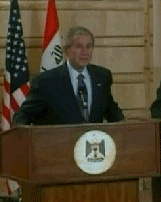The colder autumn weather has finally begun. While I was on spiritual retreat in Wareham early in the week, I managed to take a couple of long walks. My morning walk on Tuesday took me through an old tennis court at the retreat center, now unused except for one small corner where someone has painted a classical, concentric labyrinth. A line of milkweed stalks had managed to grow up through a crack in the pavement during the summer. By the time I walked past them, the stalks were yellowed, and the few leaves that were left were gray, curled, and dead. I find milkweed plants to be most beautiful when they have died from frost:– the curled leaves take on fantastic shapes, the gray pimpled seed pods burst open releasing the seeds with their white downy parachutes that will enable the wind to spread the seeds far afield.
In the middle of the woods — I had gotten off the path chasing some small brown woodland bird — I came across a few ferns that still had a little green. Most of the ferns in the forest had been bitten by frost, curled and brown. Yet in this one clump, presumably more sheltered, I found one frond mostly green, another frond mostly yellow with a touch of faded green, another frond brown at the top and yellow lower down, and the rest of the fronds brown and curled and dead. A month of autumn visible in one clump of ferns.
On my way to Agawam Cemtery, a couple of miles away, I passed a cranberry bog looking reddish purple in the slanting afternoon light. The berries had already been ahrvested, but the bog had a quiet beauty nonetheless.
In 1330 in the Tsurezuregusa, the Japanese writer Kenko said:
Are we to look at cherry blossoms only in full bloom, the moon only when it is cloudless? To long for the moon while looking on the rain, to lower the blinds and be unaware of the passing of the spring — these are even more deeply moving. Branches about to blossom or gardens strewn with faded flowers are worthier of our admiration. Are poems written on such themes as “Going to view the cherry blossoms only to find they had scattered” or “On being prevented from visiting the blossoms” inferior to those on “Seeing the blossoms”? People commonly regret that the cherry blossoms scatter or that the moon sinks in the sky, and this is natural; but only an exceptionally insensitive man would say, “This branch and that branch have lost their blossoms. There is nothing worth seeing now.” In all things, it is the beginnings and ends that are interesting….
When I got to Agawam Cemetery, I searched out the oldest gravestones. You can tell the general age of New England gravestones from their shapes, and the type of stone from which they are cut. I found twenty or thirty slate stones that clearly dated from the last half of the 18th C., mostly from the Federal era but some earlier. Most of the 18th C. stones in Agawam Cemetery are shallowly carved and covered more or less in lichen, and in most cases the lichens completely obliterate the inscription. The inscriptions half seen, half guessed at and half covered in lichen, are just as fascinating as stones where the entire inscription is visible. On one of the most beautiful stones, the inscription was no longer visible, the inscribed surface was actually flaking away; the beauty lay in its deterioration.
Walking back from the cemetery to the retreat center, I walked through suburban houses on their tight little lots. Since this is a seaside town in which the population explodes in the summer, “No Trespassing” signs appear everywhere. I passed a new house going in, a bulldozer parked beside the house, the entire lot scraped clean, showing the poor, sandy soil. The pine and oak woods that used to cover the land here were cut down for farming, grew back up again when the farms failed, and now the woods are being cut down once again for summer houses and gated communities.
More than one sign at the beginning of a road declared: “Members and Their Guests Only.” If they didn’t have those signs, the pressure from the growing population would mean the property owners would have invaders constantly traipsing through their land, past their summer house, headed for the sea. Can we say that the suburban houses, the gated communities, the signs are any less beautiful than the pine and oak woods they replace? For how long can the houses and signs last — a century or two, at most, before they fall into rack and ruin and something else replaces them. Although with global warming, what may well replace these houses is the open ocean, raging under the influence of huge coastal storms. Kenko never anticipated global warming completely changing the normal cycle of the seasons, nor did he ever anticipate that cherry blossoms might stop blooming entirely in their ancestral range.

